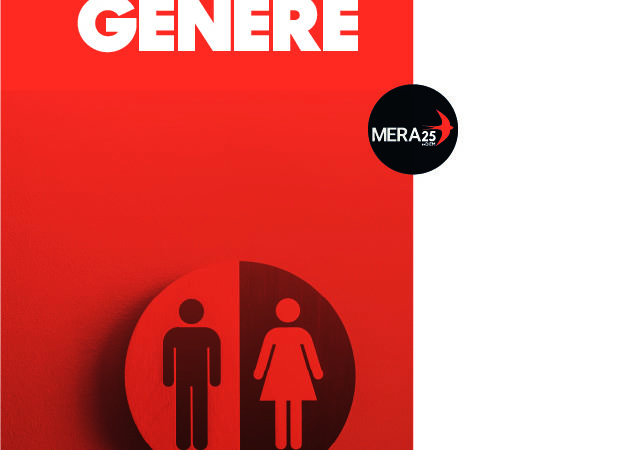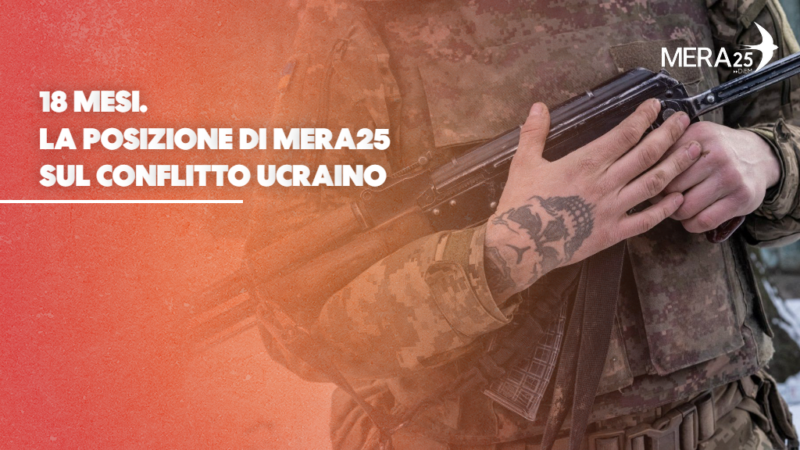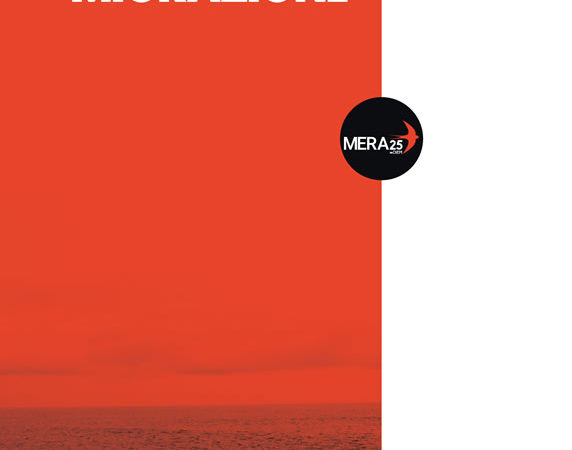From its origins in the Cold War to its triumph at undermining a disintegrating European Union.
As I write these lines in downtown Athens, Afghan, Pakistani and Syrian refugees are incarcerated in inhuman camps in Athens, in Pireaus, on various Aegean islands and in Eidomeni, a border crossing on Greece’s northern border made famous by the refugees’ light. Their incarceration is due to a recent decision of the European Union to violate international law by refusing carefully and humanely to consider their application for refugee status, to block safe passage to Europe, and, instead, to deport them to a country that has steadfastly refused to endorse international law on the treatment of refugees: Turkey.
The refugees languishing in Greece’s so-called ‘hotspots’, a euphemism for prison camps, are surrounded by a broader Wall. Physically, it takes the form of an electrified fence dissecting the Greek-Turkish land border and, more recently, another such fence built along Greek Macedonian border. Politically, it manifested itself when, a few months ago, Europe’s leaders began calling upon the President of Turkey to open his country’s borders with Syria, to let refugees in from the war torn nation while, at once, threatening the Greek government that if Greece does not seal its border with Turkey, Greece’s own northern borders with the rest of Europe would be sealed.
It is easy to get lost into the details of the unfolding drama. It is easy to despair at the irrationality and callousness of Europe’s leaders. We shouldn’t. For there is something larger and more general, in terms of its planetary significance, lurking behind these developments. We call it: The Globalising Wall.
Cold War Origins
Walls have a longstanding relation both with liberty from fear and subjugation to another’s will. After 1945, walls acquired an unprecedented determination to divide. They spread like a bushfire from Berlin to Palestine, from the tablelands of Kashmir to the villages of Cyprus, from the Korean peninsula to the streets of Belfast.
When the Cold War ended, we were told to expect their dismantling. Instead, they are growing taller, more impenetrable, longer. They leap from one continent onto the next. They are globalising. From the West Bank to Kosovo, from the gated communities of Egypt to those of California, from the killing fields of old Ethiopia to the US-Mexico border, a seamless wall is meandering its way, both physically and emotionally, on the planet’s surface. Its spectre is upon us.
Dividing lines are not what they used to be. Fences and walls have taken on new roles that their predecessors would hardly recognise. In times past they simply fended off the enemy, and lightly imprinted the Empires’ footprint on the land. Following WW2, a new species of division was born.
Before the discovery of the autonomous individual, the ancient polis constantly dreamt of demolishing its walls or, at least, of never having to keep its gates closed. Only at times of crisis or degeneracy were the gates ordered shut. Hadrian and the Chinese Emperors built great walls, but never with the intention of freezing human movement. They were mere symbols of their Empires’ self-imposed limits and a form of early warning system.
In the Era of Reason and Liberty, modernity spawned fences, walls and fortifications fit for an exciting variety of new roles: they liberated the individual from the tyranny of the ‘other’, replaced love for one’s neighbour with ‘good’ fences, pacified the colonised, marked the nation-state’s territory, imprisoned the alien, and institutionalised the weird. After 1945, however, a new species of division evolved, with a persona more sinister than ever before, spreading like a bushfire from continent to continent; each time with added ferocity, as if in order to make amends for the crumbling European Empires.
It started with Europe’s Iron Curtain and then leapfrogged the Eastern Mediterranean to reach Palestine, before ruthlessly making its mark in Kashmir. Soon after, it emerged with imposing cruelty on the Korean Peninsula, before returning to Europe to bifurcate Berlin. When the Troubles broke out in Belfast, it was there to embellish the pre-existing discontent with euphemistically called Peace Walls. When Cyprus erupted, it was there too, turning a soft, colonial Green Line into an impenetrable barrier. More recently, it preyed on the disintegrating Yugoslavia, standing tall in the midst of hitherto unified communities. Further to the south, in Africa’s Horn, it claimed murderous grey zones from the rugged tablelands between Ethiopia and Eritrea. Back, in the Promised Land, it dipped and it weaved with concrete-slab breathlessness, carving out the world’s ultimate concentration camp. Currently, it is unfolding audaciously along the thousands of kilometres that form the superpower’s underbelly, a border-fence that joins the earth’s two greatest oceans in a bid to stem the Spanish-speaking human tide that strives to break into today’s Promised Land.
Liberalism, Globalisation and the post-2008 World
The new species of division, that began globalising at breathtaking pace, had its roots in the benign notion of a free individual and a sovereign nation-state: in the idea of ‘well-defined’ spaces within the ‘walls’ that keep ‘others’ out. However, the fuel that drove its globalisation was none other than financialisation – the process of private money minting by financial institutions unleashed by the global hegemon (Washington DC) in exchange for the financing of America’s twin deficits.[1]
And so it was that our modernist concept of freedom became contingent on the colonisation of ‘alien’ others, while our splendid cosmopolitanism was funded by the frenzy of private money minting of Wall Street, the City and other financial centres, bought at the price of parochial divides that mindlessly disfigure the Earth’s face.
Not too long ago, Globalisation was being heralded as the process to dismantle all borders. It has not. The reason was that only financialisation became truly global. As trade and capital were liberated from border controls, the fences and dividing lines that separated people kept getting less porous, taller, more intimidating. Allah and God were often blamed but, in truth, they were just scapegoats for purely secular forces that would never even allow the competing gods the impossible task of drawing ‘just’ borders between their people.
Therein lies the Great Paradox: The more we develop reasons to, and means for, dismantling the dividing lines the less powerful the forces who are working for their dismantling. Deep divisions, patrolled by merciless guards, seem to be the homage that our enterprise culture pays to misanthropy.
Yet hope’s candle is burning brightly. Yeats taught us that no humanism can be authentic which has not passed through its own negation. In this sense, to confront the planet’s ugliest dividing lines is to confront the negation of our urge to be free in a world in which we are born into fewer of the roles that come to define us, and choose more of our partners and projects. This confrontation cannot, alas, be effected by either politicians or theorists. It is best experienced through the visual arts.
The Work
Danae Stratou’s first stab at capturing our world’s most impenetrable divisions took the form of a photographic installation entitled CUT – 7 Dividing Lines. Its function was to force a confrontational aesthetic upon the viewer’s eye. It alludes to a series of human interactions unfolding in the space on, between and beside these lines. The photographic stills relay humanity’s impeccable capacity to re-create normality along the time-honoured divisions that deface Belfast, Nikosia, Mitrovica, the mountain ranges of Kashmir, the red dust of Badme, the ocean beach of Tijuana. The fourteen, juxtaposed, transparencies fashion a new line, an imaginary no man’s land which the viewer physically traverses, following mentally the breadth and length of the imperialistic new species of division, and in so doing negating it; healing the rift that the latter leaves in its wake.
CUT – 7 Dividing Lines works by highlighting the unity of the human experience along the world’s sharpest divisions and contrasts it against the background of the divisions in our ‘unified’ lives. In so doing, it comments wryly, but also hopefully, on a globalising world and its delicious contradictions. At a personal level, having travelled with the artist to these divisions, and stood by her while she photographed them, I was slowly infected by a distinct, uncomfortable sensation. It had to do with a strange sense of spatial dislocation that I felt more powerfully when close to the divisions Danae was photographing.
While travelling to the Line of Control in Kashmir, I remember thinking that nothing reminded me of the road to, say, Belfast or to the concrete division in Palestine. Absolutely nothing. And yet, once we approached the Line of Control, the similarities with life next to the Northern Irish Peace Walls or to the Separation Wall of the biblical lands began to flood in.
I recall my surprise when I first saw graffiti on the Peace Walls of Belfast referring to the Wall in Palestine or to Kashmir or, indeed, to the Wall in Tijuana and Juarez. Months later I smiled to myself when in Kashmir I saw cross-references to the Belfast division painted on cement fortifications preventing Kashmiris from travelling from the Indian held to the Pakistan held parts of the province. And when in Arizona we bumped into an Israeli engineering unit building parts of the US-Mexico Wall-Fence, using concrete slabs identical to the ones that we had seen in Bethlehem, the idea of a Globalising Wall was ‘cemented’ in my mind once and for all.

So it was that the idea of the Globalising Wall hit me. Once I had conveyed it to Danae, she set out to represent it with moving pictures comprising some of her many thousands of stills – stills that had not made it into the set of fourteen images comprising CUT – 7 dividing lines.
Conclusion
That was 2005. Since then the fragmentation that followed financialisation’s implosion has only strengthened the nasty underbelly of globalisation. The Globalising Wall has spread its ugly reach into our own country, Greece. The electrified fences and walls that today imprison the refugees in Athens, Pireus, Eidomeni and the Aegean’s islands are The Globalising Wall’s extensions after the 2008 global financial crisis gave this steel-and-concrete serpent a magnificent boost. The subject that we had travelled the world to encounter has come full circle, invaded our very own Greece, and is now spreading division and discord in our backyard.
Oscar Wilde knew that the only beautiful things are the things which do not concern us. But if they are beautiful, they do concern us! Danae Stratou’s two related works, CUT- 7 dividing lines and The Globalising Wall uses visual beauty as an analytical weapon that no theorist could muster. It exposes us to images that, seemingly, concern so few of us in order to force us to throw away the mask of self-sufficiency; to re-discover in the contrast of each division’s two sides something ‘real’ and authentic about our nature.
[1] For more on this Faustian bargain, see my The Global Minotaur: America, Europe and the Future of the Global Economy, London: Zed Books, 2011, 2013, 2015
Volete essere informati delle azioni di DiEM25? Registratevi qui!



